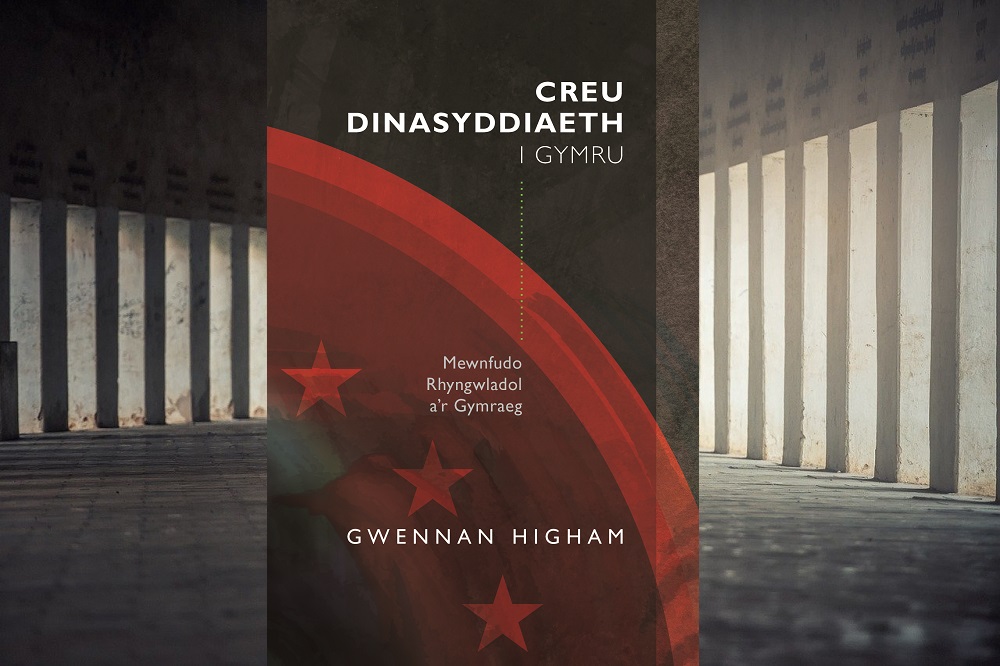Review: Creu Dinasyddiaeth i Gymru is a timely consideration of the complexities of citizenship

Jon Gower
As Britain negotiates its shaky future outside of Europe and sees fault lines appearing in the union, part of the Westminster government’s responses to the disunited kingdom has been to underline common values in language and culture.
The former Home Secretary Sajid Javid suggested what was then the new UK citizenship test would demand a deeper understanding of British values, while Baroness Louise Casey suggested that every immigrant should have a fixed amount of time in which to learn English.
As Noam Chomsky once put it ‘Questions of language are basically questions of power.’ But it’s not just language or knowledge, it’s symbology, too. Just In the past few days a news story suggested that London ministers will soon be ordering the Union Jack to be permanently flown above public buildings as a unifying act. A real banner headline, as it were.
Integration
This book is timely, then, as it explores citizenship and the challenges faced by immigrants and refugees to Wales, and the role that the Welsh language can play in any integration. In mapping out a context, Gwennan Higham suggests that dealing with multiculturalism within the boundaries of political states is one of the central questions facing countries in the 21st century, as the twin forces of immigration and globalisation redraw so many maps.
She looks at differences between Whitehall and Cardiff Bay, suggesting that the Home Office’s policies, seemingly designed to make these islands inhospitable to new immigrants are not echoed in the Welsh Government’s plan to create a Nation of Sanctuary, shored up by a sense of equal human rights. In Scotland, meanwhile, the ‘New Scots’ vision is built on welcoming newcomers, too. It is interesting that half of the Pakistani population of Scotland voted for the SNP, as if incomers were reacting to the dismantling of Britain.
‘Relic’
Higham usefully lists instances where the state has worked to quash minority languages, from General Franco’s suppression of Catalan and Basque languages in Spain through Mussolini’s attempts to get rid of German in the Tyrol to the Acts of Union and the Welsh Not here in Wales. Or as John Stuart Mill witheringly put it, it is better for the Basque to be Spanish, the Breton to be French and for to Welshman to be British ‘than to sulk on his own rocks, the half-savage relic of past times, revolving in his own little mental orbit, without participation or interest in the general movement of the world.’
Set against these are strides made in the other direction, such as European Charter for Minority and Regional Languages, published in 1992. Things are seldom entirely clear cut of course, so Sweden is supportive of ethnic multiculturalism but doesn’t extend the same support to the Sami, natives of the self-same country. Conversely, Switzerland is a model country when it comes to respecting the needs and rights of linguistic minorities, yet it denies such rights to incomers.
Canada is one of the most famous examples of a state which fully embraced multiculturalism and showcased best practices, including the perception of immigration being a good thing for the country. The former Prime Minister Pierre Trudeau put it like this, ‘A policy of multiculturalism within a bilingual framework is basically the conscious support of individual freedom of choice.’
Language
Compare this with David Cameron’s assertion that multiculturalism in Britain was a ‘deliberate weakening of our collective identity.’ Higham spends a good deal of time looking at such complexities, including views such as those of the writer and academic Charlotte Williams who thinks that Wales has concentrated on language as a component of identity and suggests that ‘Along with many others, the majority of ethnic minority individuals would find any definition of Welshness based on language somewhat exclusive.’
Québec is a useful model to contrast with the Welsh experience and Higham dutifully talks to representatives of its Government who point out that since the so-called revolution tranquille French in Québec has been seen as the majority language whereas in Wales, Welsh has the status of a minority language. This is reflected in one of the salient differences between the UK Government’s provision of English lessons for immigrants: while the Welsh Government recognizes the importance of both Welsh and English, yet is only mainly able to offer lessons to migrants in the latter tongue.
One of the hands-on pieces of research conducted by Higham is about such teaching provision, finding considerable differences between, say Gwynedd and Cardiff. It also looks at the efficacy of schemes which seek to introduce both Welsh history and language to refugees who are often multilingual and at the process of welcoming Syrian refugees to Wales, which can include Welsh lessons depending on whether the host community is Welsh speaking. One failing of such policies, Higham suggests, is that there are inadequate strategies for sustaining and monitoring such policies.
The book closes with the author’s suggestion that should Wales ever have powers over immigration the fate of newcomers would be more hopeful. Should that day arrive, this sterling, thoughtful and thorough consideration of the many complexities of citizenship will be a useful and necessary companion volume.
Creu Dinasyddiaeth i Gymru is published by University of Wales Press and is available to buy here.

Support our Nation today
For the price of a cup of coffee a month you can help us create an independent, not-for-profit, national news service for the people of Wales, by the people of Wales.




